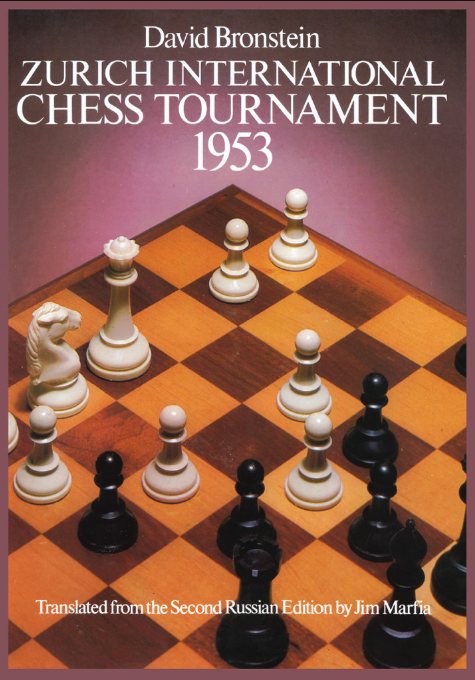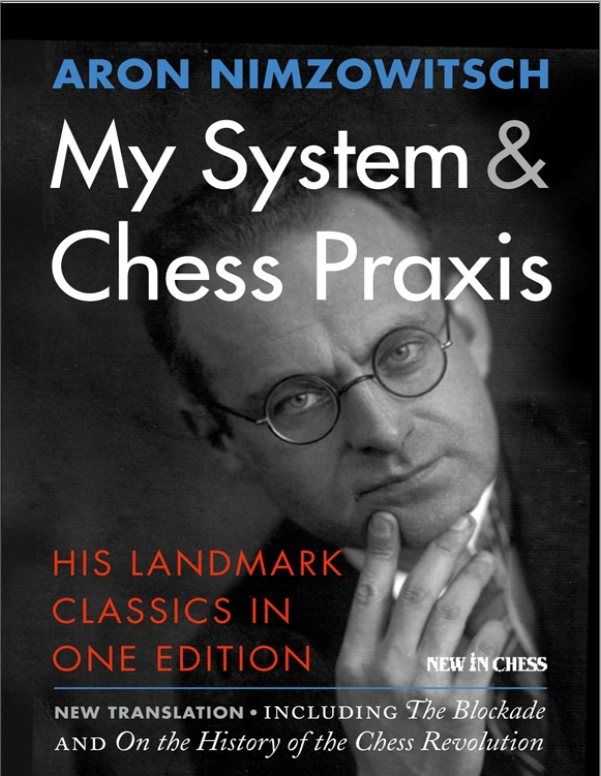📘 Book Overview
Zurich International Chess Tournament, 1953 by David Bronstein, first published in Russian in 1956 and later translated into English, remains one of the most celebrated chess books ever written. The Dover 2013 edition is a reprint of the classic tournament book, covering one of the strongest Candidates Tournaments in history. The event was held in Zurich (and nearby cities) in 1953, with 15 of the world’s top players competing in a double round-robin for the right to challenge Mikhail Botvinnik for the World Championship.
Bronstein, himself a participant and runner-up in the 1951 World Championship, not only reports the games but provides deep commentary, rich annotations, and insights into the psychology of elite competition.
♟️ Content Breakdown & Key Themes
- Tournament Structure: 30 rounds, 210 games in total, played among legends such as Smyslov, Reshevsky, Keres, Najdorf, Geller, Kotov, Taimanov, and others.
- Annotated Games: The book presents all 210 games, annotated with varying levels of detail. Many include Bronstein’s candid reflections, pointing out missed chances and practical decisions.
- Themes & Style:
- Practical play vs. theoretical preparation.
- The tension between classical principles and emerging dynamic styles (Soviet School).
- Psychological resilience in long tournaments.
- Honest evaluations of his own play and rivals.
- Narrative Style: Bronstein writes not just as a commentator, but as a storyteller, conveying the atmosphere of Zurich, the players’ personalities, and the human side of top-level chess.
🧠 Depth, Accuracy & Teaching Style
Bronstein’s annotations are not the dense, engine-like analysis of Dvoretsky or Nunn. Instead, they are practical, instructive, and human. He frequently explains why a move was made rather than just what the best move was. His commentary focuses on ideas, plans, and psychological battles, making it timeless even today.
- Accuracy: Some analysis is outdated in light of modern engines, but the conceptual explanations remain golden.
- Teaching Style: Conversational, philosophical, and full of insights that appeal to both intermediate and advanced players.
📊 Strengths & Weaknesses
Strengths
- A complete record of one of the greatest tournaments ever played.
- Highly instructive, focusing on plans and ideas, not just tactics.
- Human, candid, and even humorous commentary.
- Historical and cultural insight into mid-20th-century chess.
- Dover edition is affordable and accessible.
Weaknesses
- Not a modern opening manual; opening theory is outdated.
- Some games receive lighter notes compared to others.
- The prose can feel verbose or meandering if you prefer concise annotations.
- No modern algebraic diagrams in the Dover edition (uses descriptive notation in some older versions, though Dover 2013 is algebraic).
👥 Target Audience
- 1200–1600: May find it challenging but inspiring—good exposure to classical games.
- 1600–2000: Ideal audience—enough experience to appreciate Bronstein’s explanations and learn practical strategy.
- 2000+: A treasure trove of historical and psychological insight, though analysis may be less cutting-edge than modern sources.
🏆 Historical & Practical Significance
The Zurich 1953 tournament is remembered as one of the greatest ever, both for its sheer strength and the richness of the games. Bronstein’s book immortalized it, influencing generations of players. Fischer called it one of the best chess books ever written. Compared to other tournament books (Nottingham 1936, New York 1924 by Alekhine), Bronstein’s is less formal and more personal, setting a new standard for how chess could be written about.
📌 Key Takeaways & Lessons
- Chess is about plans, not just moves – The book constantly emphasizes strategic ideas.
- Psychology matters – Long tournaments test stamina and confidence.
- Imbalances decide battles – Bronstein highlights typical dynamic features: bishop vs. knight, pawn weaknesses, open files.
- Flexibility > dogma – Classical principles are guidelines, but practical play often requires exceptions.
- The Soviet School’s influence – Dynamic pawn breaks, piece activity, and initiative became central.
- Errors teach more than brilliancies – Bronstein often highlights practical mistakes and what can be learned.
- Balance of calculation & intuition – A key theme throughout his notes.
📚 Study Plan
Beginner (0–1200)
- Skim through games without worrying about deep analysis.
- Focus on spotting basic opening principles (development, center, king safety).
- Replay famous brilliancies (e.g., Bronstein–Najdorf, Geller–Euwe).
Intermediate (1200–1800)
- Go through the book game by game, replaying them on a board.
- After each game, write down the main plan for both sides in your own words.
- Focus on pawn structures: Isolated pawn, hanging pawns, minority attack, etc.
- Do weekly reviews of 5–10 games.
Advanced (1800+)
- Use this book as a training manual: pick one round, study all games deeply, and compare Bronstein’s notes with engine evaluations.
- Identify recurring strategic motifs (e.g., exchange sacrifices, attacking opposite-color bishops).
- Create thematic collections of positions (pawn breaks, dynamic sacrifices) for training.
- Cross-reference with modern games to see how ideas evolved.
🔗 Recommended Next Steps
- New York 1924 by Alekhine (another classic tournament book).
- The Life and Games of Mikhail Tal – for narrative-driven annotations.
- Candidates Tournament 1959 by Wade & O’Connell – follow-up to Zurich’s legacy.
- Modern supplement: Zurich 1953: 75 Games Annotated by Miguel Najdorf (for alternative perspectives).
✅ Final Verdict
- Clarity: ★★★★☆
- Depth: ★★★★☆
- Usefulness: ★★★★★
- Overall Value: ★★★★★
This book is a masterpiece of chess literature. While the analysis is not cutting-edge by today’s standards, its human explanations, historical significance, and sheer instructive value make it a must-own for any serious chess player. Bronstein doesn’t just annotate games—he invites you into the mind of a world-class player navigating one of the greatest tournaments in history.




